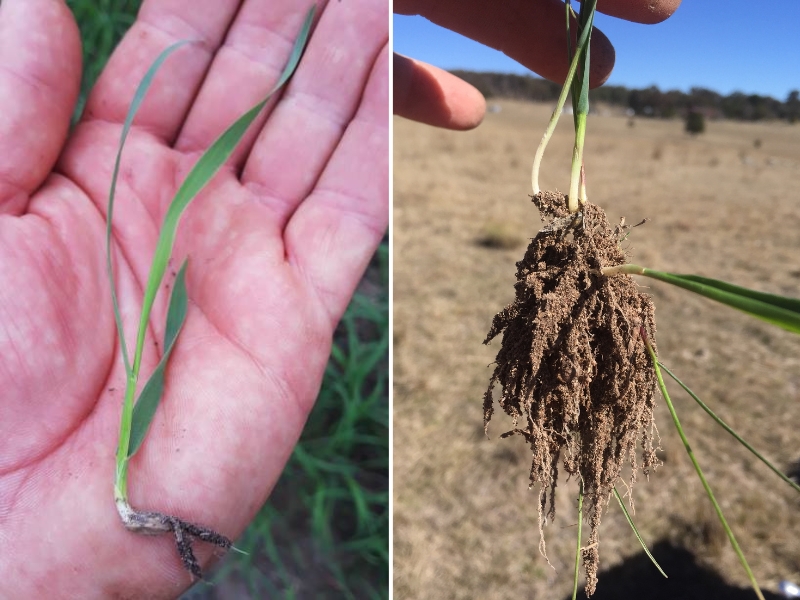Are you ready for low rain? Perhaps you’re already experiencing it? Within the lifetime of our 5 year old, we have had severe drought, the black summer fires, and some of the worst flooding on record. Just how is one expected to farm productively in this highly variable climate???
The answer, in part, is attitude. To avoid becoming victim to the boom and bust, we have to be ahead of the rain. We have to be ready for whatever will arise, and factor in with every decision that it might not rain. We have to be opportunistic.
What is an opportunistic farmer?
An opportunistic farmer is any farmer who maximises the land’s production opportunities while minimising risk – this is both immediate cost and risk of reduced production potential and increased costs down the line. This means the opportunistic farmer is someone who plans ahead, and works with their land as a production partner.
Maximising opportunity
Maximising opportunity includes having your seed, biostimulants, and anything else you need in the shed ready to go so you can get them out at the most effective time. Say the forecast gives you four days notice of a rain event and you want to get your seeds out. If you leave it until you get the forecast you can’t guarantee you will be able to get everything you need! Transport for your order could easily take longer than four days in the current logistics world. Or, the forecast (or actual) rain might be heavier than what you could plant in. In this case you might need to get the seed out beforehand to keep your opportunity window open. The gear needs to be in the shed. [Side note – in case you were wondering and wanting Biocast for seed inoculation, it does have a 12 month minimum shelf life when stored in a protected spot.] Lee did some work with Bruce Maynard last year. Bruce practices ‘no kill cropping’ where he dry plants into existing cover. He finds that the new crop seeds have to be in the ground before the rain, because otherwise the existing cover gets the head start. He is having fantastic results in productivity and soil regeneration, and is definitely a successful opportunistic farmer.
Maximising opportunity means having a great grazing management plan if you run animals so that you can be flexible with what the land needs, and have drought reserves up your sleeve for dry times (courses in holistic management are so worth it). It also means working with your land to increase its resiliency. This looks like, for example, improving soil health to improve water holding capacity and water infiltration rates, having maximum ground cover, and making space for refugia of wildlife from microbes to mammals to wild plants so that they, too, can survive the dry times and help your land back to health.
Opportunity cost
We can plan our opportunities in the context of their potential risk if the rain doesn’t fall. We can call this ‘opportunity cost’. For example, we could be wanting to plant a paddock with cow peas. The opportunity might be five grazings. The cost is the bag of cow peas plus any inputs. The risk is the crop failing, which is the cost of your seed and inputs, and what to feed those cows without the crop, and any non-financial costs that may arise.
We need to start seeing inputs in the context of risk in the face of climate variability. Some fertilisers, for example, become high risk, with a high opportunity cost. This is because they are expensive upfront; they uncouple the relationship between the plant and the living soil, which is a plant’s life support in challenging times; and destroy the ‘soil sponge’ which determines how effective any rain that falls can be. Urea is a classic example. [For more on this we recommend Dr Christine Jones’ talk “The Nitrogen Solution” on YouTube.] Water-soluble granulated fertilisers are very risky too. First of all, being water soluble, they don’t work in dry times. Second, they serve to keep the plants’ roots in the surface zone, which is the most vulnerable place they can be – a resilient plant has roots as deep as possible. And third, again, they shut down the link between plant and soil microbes.
A biostimulant like Biocast on the other hand becomes very appealing, because it is relatively low cost, potentially improves the soil sponge, and gives your plants more natural resources to ready itself for weather extremes. Just today we had a call from a customer who said yup it’s dry, but he’s really proud of his crop and based on the ‘pull test’ (try and pull a plant out of the ground) he’d need a crow bar to get one out, the roots are nice and deep. Those plants, and that farming business, will have good resilience to whatever the weather throws at them.

Conclusion – be like Nature.
Nature is an opportunist after all. She plants her seeds any old time, and they hang about until they’re ready. Her opportunity costs are things like sending roots deep into the soil before sending a shoot up into the world – using stored energy to create resilience. We find it exciting to think of the potential for agriculture as we all get better at becoming opportunistic farmers!
This article was originally published in our monthly newsletter. Subscribe here to see more like this in your inbox.
Is stocking up on Biocast part of your opportunistic farming strategy? Order yours today via our online shop, or by calling Lee directly on 0429 197 596.
